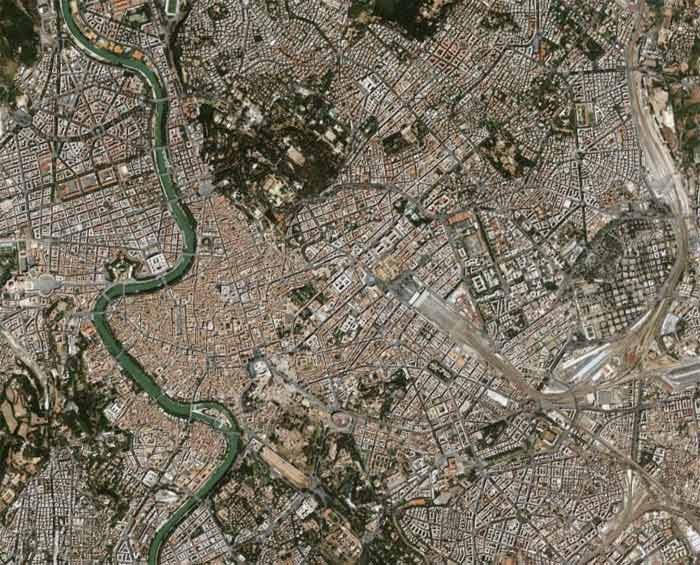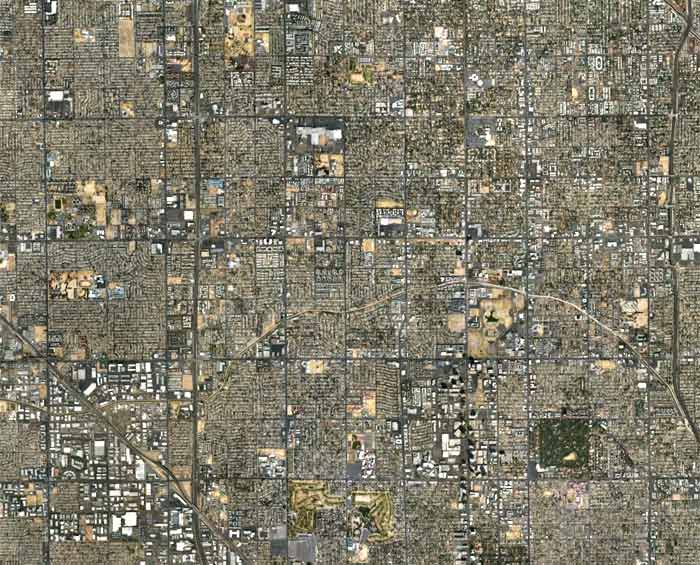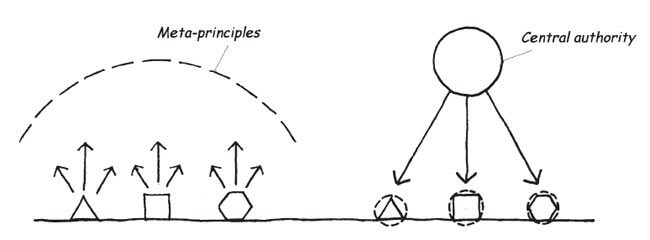Fractal ApplicationsFractal CitiesCities are complex systems that behave in some ways like living organisms. The rules of chaos theory and fractals apply directly to the evolution of cities, and the study of urban patterns allows us to benefit from the experiments of past cultures to shape our own future with as much awareness of the consequences of our actions as possible.  The physical structure of a city provides a record of decades or centuries - or millennia - of human activity. Cities that have a historical record of their urban policies - essentially zoning codes - allow us to study the impact of different types of rules on the development of cities. Small changes in the rules that govern a city can have dramatic impacts on the ways the city forms itself. The impact of the small changes is often amplified through positive feedback loops. Once a city forms a shape, there are often negative feedback loops that serve to stabilize its shape. Sometimes, with certain rule systems in place, the cities take on fractal characteristics. This is particularly common in medieval cities in Europe and the Middle East. What does a "fractal city" mean? Basically, it is a city that has similar structures at different scales. A large fractal city tends to grow that way by absorbing lots of smaller villages. So the city becomes a collection of villages, and the villages are collections of neighborhoods. The roads in a fractal city tend to go in seemingly haphazard directions, but really they serve as direct connections between various central hubs in a dynamic urban network. A diagonal road can be as much as ~70% (1/sqrt(2)) shorter than two roads in a rectangular grid, so there are efficiencies built in to the geometry of the city. The processes that form fractal cities are slow and organic and are the results of millions of individual decisions by the citizens about how they want to live. These decisions are made within a framework of principles about what is ok to do in the city. The urban rules from medieval fractal cities are called "proscriptive", which comes from the word "proscribe," which means to forbid, or condemn. This means basically that people and businesses are free to do whatever they want for the most part, as long as they don't do certain unacceptable things. By contrast, many modern cities have different rules to govern their growth that do not promote organic, fractal patterns. Modern cities tend to have "prescriptive" zoning rules, which prescribe what to do in various areas. For example, a zone may be designated "Industrial" or "Residential" or "Commercial," for example, and those are the only activities permitted in the specified zones. This type of urban rule system results in non-fractal cities whose basic patterns are dictated from above, by the city government.  Phoenix, Arizona is a much younger, more grid-like city than Rome, reflecting in part its different zoning rules. Image courtesy of Google Earth. Ancient cities evolved over centuries to meet a variety of people's everyday needs. Everyone needs to eat, to sleep somewhere, to shop, to play, to work. Modern cities have been able to evolve the way the have because of the availability of easy, affordable personal transportation: the car. This allows residential zones to exist far from commercial or industrial zones.
Ancient cities did not have this luxury, and they evolved to allow people to have all their needs within immediate walking distance. The fractal structure at
many scales that ancient cities display allow cities to be much more pedestrian-friendly and human-scaled.
In a time of ever-scarcer petroleum and changing global climates, we can learn much from civilizations that have thrived for centuries without relying on individuals each owning cars.
Understanding the impacts of small changes in the zoning rules to the long-term evolution of a city, coupled with the ability to model urban development in
computer simulations will help us design optimal cities that will endure and thrive long into the future.

|
|
<- PREVIOUS NEXT -> © Fractal Foundation. |